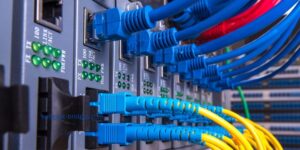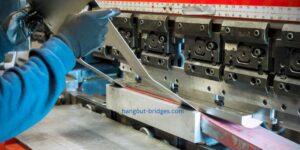Key Takeaways
- Discover a Safe Harbor 401(k) plan and its key features.
- Learn how these plans can benefit both employers and employees.
- Understand Safe Harbor 401(k)s compliance requirements and tax advantages.
- Explore real-world examples and research data to back up the benefits.
Table of Contents
- What does a Safe Harbor 401(k) Plan entail?
- Benefits for Employers and Employees
- Compliance and Tax Advantages
- Real-World Examples
- Tips for Implementing a Safe Harbor 401(k) Plan
What does a Safe Harbor 401(k) Plan entail?
A Safe Harbor 401(k) plan is a tax-advantaged retirement plan designed to pass the Internal Revenue Service’s nondiscrimination testing automatically. It makes them particularly appealing to employers who want to sidestep some of the more complex facets of compliance associated with traditional 401(k) plans. But first, what is Safe Harbor matching? Understanding what Safe Harbor is can elucidate how these plans are structured to benefit employers and employees. Safe Harbor 401(k) plans require employers to contribute mandatory retirement savings to their employees. These contributions can be either a matching contribution based on employee deferrals or a non-elective contribution to all eligible employees, regardless of whether they contribute to their 401(k). It ensures that all employees benefit substantially from participating in the plan, making it an attractive option for both parties.
Benefits for Employers and Employees
Employer Benefits
- Compliance Ease: Safe Harbor plans automatically comply with specific IRS regulations, such as the actual deferral percentage (ADP) and actual contribution percentage (ACP) tests. It reduces the administrative burden and the risk of failing compliance tests, ensuring your plan remains in good standing.
- Attract and Retain Talent: Offering a Safe Harbor 401(k) can be a competitive advantage in today’s job market. Prospective employees seek after-retirement plans; a robust plan can help attract talent. Furthermore, offering such benefits can increase employee retention rates as employees value companies that invest in their future financial security.
- Administrative Simplicity: Safe Harbor plans can simplify the administrative processes compared to traditional 401(k) plans. With the automatic compliance feature, employers can focus more on their business operations rather than getting bogged down in the complexities of 401(k) plan management and regulatory requirements.
Employee Benefits
- Immediate Vesting: Contributions made by employers typically become the property of employees immediately, unlike other 401(k) plans where vesting schedules can delay the employee’s full ownership of contributions. This immediate vesting can provide employees with a sense of security as they can access their funds if they leave the company or retire.
- Enhanced Retirement Savings: Employees can contribute more to their retirement savings without federal income tax penalties. This can be particularly advantageous for employees looking to maximize their retirement contributions, given that the contributions grow tax-deferred, allowing their retirement savings to accumulate more effectively over time.
- Financial Security: A Safe Harbor 401(k) plan provides employees a robust retirement savings vehicle, enhancing their long-term financial security. Studies indicate that employees engaged in such plans feel more secure about their economic future, which can also increase job satisfaction and productivity.
Compliance and Tax Advantages
One key advantage of Safe Harbor 401(k) plans is the ease of compliance with IRS regulations. Explaining Safe Harbor rules offers detailed insights into the provisions that make these plans straightforward. Employers do not have to undergo the annual nondiscrimination tests typically required for traditional 401(k) plans, thus eliminating a significant compliance hurdle.
Additionally, there are significant tax benefits for both employers and employees. Employer contributions are tax-deductible, providing the company with beneficial financial offsets. For employees, donations made to their Safe Harbor 401(k) accounts grow tax-deferred, meaning they only pay taxes on the money once it is withdrawn. Furthermore, companies adopting Safe Harbor plans report reduced administrative costs and increased employee participation rates, contributing to a healthier financial environment for the business and its workforce.
Real-World Examples
Many companies have successfully implemented Safe Harbor 401(k) plans to great benefit. For instance, this New York Times article highlights how small businesses increasingly adopt these plans to stay competitive in the job market. These businesses often see higher employee satisfaction and retention rates, proving Safe Harbor plans are practical compliance and talent management tools.
Consider a small tech startup that decided to implement a Safe Harbor 401(k) plan to attract top-tier talent. Within a year, they noticed a significant reduction in employee turnover rates and an uptick in job applicants. Employees appreciated the immediate vesting, understanding that the company was investing in their long-term financial well-being. This simple yet impactful change helped the startup grow more robustly and maintain a competitive edge in the industry.
Tips for Implementing a Safe Harbor 401(k) Plan
- Please consult with a Financial Advisor: It’s crucial to get professional advice to understand Safe Harbor plans’ full implications and benefits. Financial advisors can provide tailored recommendations that align with your business’s financial goals and employee needs.
- Choose the Right Provider: There are numerous 401(k) providers out there; selecting one that best fits your company’s needs and compliance requirements is essential. Take the time to research and compare different providers to find one that offers the best combination of features, fees, and customer service.
- Communicate with Employees: Ensure your team understands the plan’s benefits and features, ensuring higher engagement and participation rates. Provide educational sessions, informational materials, and one-on-one meetings to help employees grasp how the plan works and how it can benefit them.
In conclusion, Safe Harbor 401(k) plans offer significant advantages for both employers and employees. By streamlining compliance and enhancing the attractiveness of retirement benefits, these plans make retirement planning more straightforward and more accessible. The result is a more financially secure workforce and a company that stands out as an employer of choice. Safe Harbor 401(k) plans can be a trusted pillar supporting operational efficiency and employee satisfaction as businesses grow and evolve.









